Living Voice Auditorium R25A Anniversary Loudspeakers Pair
Ultra high performance audio products for the world’s most discerning music lovers.
DESIGNED & MANUFACTURED IN ENGLAND
“With Living Voice I completely reach my maturity after years of research and listenings. It's a magic design.”
Gerardo Ventura, Playstereo, 2017
“It no longer really makes sense to talk about the sound itself but rather how absolutely wonderful the music becomes. I’ve never had such a completely revelatory and unexpected experience in my home audio life.”
“I felt it was extraordinary to listen to music in this way and come away in awe at the sheer emotional and connective power these speakers possess.”
6Moons, Edward Barker, OBX-RW
“What is most alluring about these speakers is that they bring out so much in your record collection - great music becomes fantastic, addictive and totally engrossing.”
Jason Kennedy, HiFi Choice, UK
Living Voice Auditorium R25A 25th Anniversary.
To mark 25 years since the launch of our original Auditorium loudspeaker, we’ve created the R25 Anniversary model.
Superficially identical to earlier generations, but fundamentally a different design, this is in all respects the most advanced Auditorium yet.
A distillation of everything we’ve learned in three decades, the R25A has a vivid ‘see-through’ presentation, a coherence and freedom that lends fresh insight into all music genres.
An Auspicious Debut For The R25A.
The official launch of the R25A was at the Munich High End Show 2019. A number of listeners were more than a little taken aback by the energy and performance levels achieved by this relatively unobtrusive, apparently simple speaker system.
I returned from High End 2019 in Munich thinking of one speaker more than any other, those small white speakers that filled the big room with a full, magical sound. I’m still not prepared to call them giant killers – maybe just a small miracle that needs further investigation.
MARC PHILLIPS, PARTTIMEAUDIOPHILE.COM.
Design Rationale: Auditorium Series.
The Auditorium R25A is the base model in the Auditorium Series followed by the Avatar 3, IBX-R3, IBX-RW3 and OBX-RW3.
All share our favoured MTM (mid, treble, mid) driver configuration, which offers performance advantages over both a simple 2-way design and the more complex but less elegant 3-way option. The MTM topology possesses a more symmetrical polar and more even power response, as well as superior phase characteristics. Factor in higher sensitivity and lower intermodulation distortion and you have an elegant solution even before you design the crossover – a true Occam’s Razor approach. Presenting an easy load and a genuine 94dB sensitivity, each Auditorium model allows class A valve electronics to shine, bringing music to life with verve and vitality.
The elegantly proportioned cabinets and small footprint of the Auditorium Series conceal a meticulous, obsessive approach to the complex problems of loudspeaker design. The Auditorium’s unobstructive natural qualities cut straight to the heart of the musical performance. There is a common DNA from the Avatar R3 up with degrees of refinement, precision of component tolerancing, and overall component quality increasing significantly as you ascend through the range.
In 30 years of loudspeaker development, Living Voice has evolved to the point where around 90% of our crossover components are proprietary. Should we fail to find components that exactly meet our needs, we design in-house and have them engineered to meet our specific objectives – these include film & foil capacitors, non-inductive wire-wound resistors and precision air-core inductors. In this way we can temper the ‘voicing’ to meet our critical musical standards. Most recently, we have developed our own HF unit in conjunction with Scanspeak, a driver which preserves the elegance and filigree of the renowned Revelator but relieves it of a broad energy dip between 10kHz and 15 kHz.
Two 6.5” bass-mid drive units (again a proprietary design made for us by Scanspeak) are used in parallel to produce the equivalent surface area to a single 10” driver – but with half of the excursion and 50% lower intermodulation distortion. Our driver can work cleanly above crossover, facilitating seamless integration with the HF system without the need for steep electrical filter slopes or the use of notch filtering to counteract stop-band break-up modes.
Each Auditorium is ideally suited to exploiting the inherent advantages of class A valve amplification, and has been designed and voiced with the output impedance (and damping factor) of zero/low negative feedback direct-heated Triode designs in mind. In smaller rooms, the 8 watts offered by a single-ended 300B design can be fully realised, however we recommend the use of amplifiers with 15 watts or more to exploit the full dynamic potential available on a broad range of music programme. The dispersion characteristics of the Auditorium Series are such that they create a coherent soundstage even for listeners sitting significantly off-axis. This is emphatically not a ‘hot spot’ design.
Development Process – The Human Factor.
As someone once said, “Not everything that counts can be counted, and not everything that can be counted counts.” It’s a maxim worth repeating in loudspeaker design.
No component is truly benign and there is always a hint of added character, colour or texture which influences the sound. We have literally hundreds of components of different technologies in our R&D library which we can refer to when we are voicing our designs. Finely-honed subjective management of these unmeasurable, unquantifiable characteristics is as important as the strict science of precision crossover filter design. Our crossover designs are the product of three decades of evolution; the goal is the seamless integration of cabinet and drive units to produce an organic ‘out of the box’ listening experience.
We develop all Living Voice loudspeakers using demanding broad spectrum complex musical programmes, with the emphasis being on holistic musical expression, communication, and balance – of creating the illusion of real human beings performing with passion and purpose.
Technical Specifications & Measurements.
Basic performance specifications for the Auditorium models are listed below.
R25 Anniversary
| SENSITIVITY: | 94dB |
| NOMINAL IMPEDANCE: | 6 Ohms |
| LOADING: | Reflex port to rear of cabinet. |
| FREQUENCY RESPONSE: | 35Hz–22.5kHz |
| POWER HANDLING: | 100 Watts |
| CABINET DIMENSIONS: | W 215mm × D 270mm × H 1030mm |
| PLINTH: | W 215mm × D 270mm × H 140mm Black textured finish. |
| GROSS WEIGHT: | 19Kgs per cabinet. |
TECHNICAL SUMMARY:
- High sensitivity, wide dispersion MTM driver topology 750-density hardwood composite enclosure.
- Proprietary hand-wound air-core inductors, mechanically isolated crossover.
- Optimised crossover layout.
- Proprietary non-inductive wire-wound resistors.
- Proprietary Living Voice metallised polypropylene capacitors.
- Treble: Scanspeak 26mm dome tweeter 8ohm. Double ferrite magnet. Fabric dome diaphragm.
- Bass / Mid: Scanspeak 17cm doped paper-coned bass/mid drivers made specifically for Living Voice.
- Woods and finish: Premium furniture grade book-matched natural veneers in Cherry. Walnut. Maple. Rosenut. Black Ash, Flat White.
Color accuracy
NB. Veneer representations on-screen should not be considered 100% accurate – there will inevitably be variations in colour due to your monitor settings and of course natural variations in colour and grain in the veneers themselves. We occasionally produce a number of cabinets in a ‘one-off’ finish such as Zebrawood – please ask for details of any currently available options.
Meet the designer on the evolution of the Auditorium R25 ANNIVERSARY
Living Voice designer Kevin Scott
To mark 25 years since the launch of our original Auditorium loudspeaker, we created the R25 Anniversary model.
Superficially identical to earlier generations, but fundamentally a different design, this is in all respects the most advanced Auditorium yet.
Q: Why has the R3R been replaced with R25A?
We had noticed a change in the appearance of the diaphragm material of the R3R HF unit – a slight alteration in colour – and so we decided to compare the performance of these new units to our reference HF unit. There was a clear correlation with a change in its performance. We had previously learnt from the RW3 project that even if a diaphragm material is apparently identical in specification, with the same weight, warp, weft, and chemical composition, but comes from a different producer, there can still be profound performance differences – even if these aren’t measurable.
We therefore made adjustments to the crossover to accommodate this change and, while doing this we thought it was a good time to revisit all aspects of the design with fresh eyes and ears to see if there were any other performance gains to be made. This exploration coincided with the 25th anniversary year of production of the Auditorium model, so it seemed timely to celebrate this landmark with a greatly improved design and to name it the R25A to mark this anniversary.
Q: How long did it take to develop the R25A?
It wouldn’t be too pedantic or cute to say that the R25A has taken 25 years to develop. During its 25 year career, like all of the speakers in this series, they have benefited from continuous incremental improvements and refinements – including three quite significant design changes. We believe strongly in ‘marginal gains’ – not unlike Dave Brailsford’s winning strategy with his Tour De France cycling teams. We pay attention to every single aspect of the design whereby a myriad of small contributions add up to a great deal. There is no single aspect of the design that hasn’t received close consideration in the context of the whole. Our methodology involves a focused and exhaustive iterative development process, which is extremely time-consuming. In the case of the R25A this led to a complete redesign of the crossover from the bottom up to achieve our desired goals.
The new crossover is considerably more complex in both design and construction, and it is a major performance step forward. Accordingly, we are permanently replacing the R3R with the R25A.
Q: What are the principal benefits sound-wise?
The most significant thing to me about the performance of the R25A is how seamlessly integrated and coherent it is. This is an overly used description, but in this case, it is so striking, with a 3-dimensional quality that you can look in to and see through. There is a singular lack of confusion or ambiguity, even in the most complex musical passages; an innate rightness about the balance that makes music make sense.
Q: How does R25A compare to the other speakers in your range?
The R25A has the same musical values as all Living Voice loudspeakers, albeit achieved with a different set of ingredients and a slightly different balance in the round. This is our most affordable model, and a solid step onto the Living Voice ladder. A good loudspeaker is not strictly about aspects of ‘hi-fi sound quality,’ it is about creating a musical coherence and coordination, and in this respect, I believe we have achieved a very high standard.
Q: What are the constructional differences between the R3R and R25A?
The cabinet and vent tuning is the same as the R3R, but that’s where the similarities end. We have made significant changes to the crossover, bringing the crossover point lower, as well as changing the slope angles, and adjusting the tonal balance. We have also introduced a series network to control the tweeter driver units’ natural resonance frequency at 700Hz. There are now 16 crossover components per channel, all of which have been chosen for both their physical, electrical, and just as importantly their alchemical characteristics.
Q: What are the materials of the cabinet, stand and spikes – are there any acoustic advantages to these choices?
As we have outlined, every aspect of the speaker has been considered and selected based on listening to music programme. The cabinet is a fundamentally important part of this; five sides of the carcass are constructed from a high specification particle board with a strictly selected density; something that we took many prototype iterations to select. It has excellent energy transmission qualities that neither stifle nor exaggerate the tonal and dynamic behaviour of the drivers. We balance this with an MR-MDF rear baffle to provide a degree of differential damping. The black plinth is made from the same material as the main carcass substrate and is sympathetically tuned to this end.
Q: Is there anything in the cabinet to stabilise how it behaves?
The R25A cabinet has no internal bracing, which is quite unusual, and its resonance behaviour has been tuned to be alive yet benign. We use a small controlled quantity of wadding material for internal damping. The rear vent tube is un-damped.
Q: Why use a veneer on the inside of the cabinet?
All cabinets should be built with a ‘balancing veneer,’ a time-honoured cabinet making practice which structurally stabilises the cabinet and stops it moving. It is quite common these days to use a thick specialist paper to do this, but we do not like the impact it has on the sound. Therefore we use a real wood veneer, and furthermore having listened to the marginal influences of the different wood veneer species, we have chosen to use Maple inside all of our cabinets as a balancing veneer. It is hard to explain quite why, but we preferred it over all other choices during the iterative development process and listening tests. As you can imagine, all of this is very expensive and time-consuming with each decision leading to the requirement for a fresh prototype.
Q: Essential cabinet description?
30-litre symmetrical D’Appolito design, except for the offset HF unit.
View product specifications.
Q: Details of the tweeter design?
It is a 26mm fabric soft dome, with an aluminium faceplate and a double magnet structure, with a copper rather than aluminium voice coil. It has a very fresh and open natural sound, possessing a sympathetic quality with our proprietary bass/mid drivers.
Q: And the bass/mid drivers?
They are 17cm. These are exceptional drivers custom-made for us by Scanspeak. They deviate from the current design paradigm in most ways. They have a shallow curvilinear diaphragm, narrow diameter voice coil, aluminium former, a pressed steel basket, and foam suspension surround… virtually none of these things are standard practice on today’s high power handling ‘studio monitor’ type drivers. They have an uncanny ability to capture a musical event.
Q: Why quote only basic measurement parameters?
It is very difficult to make any meaningful measurements of the low-frequency performance of loudspeakers below 200Hz, unless you use an anechoic chamber, and even then this will not tell you about the ‘real world’ holistic performance of the loudspeaker (although it will tell you where the minus 3dB point is, under anechoic conditions).
Real world listening incorporates the reverberant field of the listening room, and it is how this reverberant field behaves in conjunction with direct radiated sound that is perhaps equally, if not more important, than that of the direct radiated energy. The way the speaker energises the room both on and off axis is the big deal. Also, a subjectively extended bass performance seems to be a characteristic of MTM (D’Appolito) loudspeaker designs generally, with in-room performance exceeding what you would expect simply from looking at the specification of the drivers on paper.
Q: Which capacitors do we use?
There are ten capacitors in the crossover per channel; two in the high pass filter, five in the low pass filter and three in the LCR trap filter. We use three types, two of which are proprietary and the other is NOS military. It is a combination of technologies and chemistries.
Q: What is the internal cable?
The internal wiring harness uses our own proprietary crystal oriented 2-core deep cryogenically treated copper. Again much prototyping was done with this, including our own preferred exotic speaker cable. However we found that our low inductance design offered the best balance and best fit with all of the other design decisions we had made for the loudspeaker.
Q: Why is there no impedance linearisation?
We control the impedance peak at 700 Hz on the HF unit, with an LCR network but do not use any other impedance equalisation, as we have achieved subjectively perfect integration without having to resort to this.
Q: Why is the phase integration so good?
Although objective measurements and techniques, and computer modelling, are valuable tools in the early stages of loudspeaker development, they can only take you a short distance down the road. Designing the crossover by ear is the only way to make something that touches the human soul. Using complex, demanding and artistically substantial programme material, our subjective and iterative methodology allows us to ‘dial-in’ the integration by ear. Obviously, this requires a developed musical sensibility which the designer must use to make value judgements about what constitutes ‘right.’ When it is ‘right,’ there is a holistic integrity about all aspects of the performance, and as if by magic it transcends sound quality and becomes a musical telescope. In brief, you don’t need to measure when something is right, you can hear it. It makes the music make sense in every way.
Q: Is there a minimum room size? And what’s the power requirement?
These two issues are related – the bigger the room the more power you need: it's an inverse square law. In a small room, of let's say 3m × 3.5m, none of the Auditorium Series require more than an 8 watt amplifier – even on very large scale music. It’s perfectly okay to use a more powerful amplifier, but the power isn’t strictly needed. In such a room, even with an 8 watt amplifier there will be no shortage of scale or dynamic range. There are many owners of Auditorium Series speakers with examples of 2A3 & 300B amplifiers which typically produce 7-10 watts. If the room is slightly larger, perhaps 4.5m x 7.5m, it’s better to have around 15-20 watts. In still more expansive spaces of let’s say 6m x 10m or more, 25 watts has normally proved to be perfectly sufficient.
Our passion – and preference – is undeniably for valve amplifiers of the types predominantly used to develop and ‘voice’ our loudspeakers. That said, many satisfied customers have chosen to partner their Auditoriums with solid-state amplifiers and achieve a very fulfilling standard of replay. Our recommendation in this respect is generally for Class A designs, which will typically have a power output in the range of 12-40 watts, all eminently suitable for the Auditoriums.
Auditorium Series
It's important to anyone with a passion for music that their hi-fi system has a natural tonal balance and more importantly an even and consistent dynamic balance. Many people, and technophiles in particular, believe that this balance can be achieved through objective quantitative analysis.
At Living Voice we have a different outlook. We develop our products using our musical sensibility, and we measure our progress against the artistic expression and emotional communication that we are able to realise in recordings of significant musical performances.
The Auditorium Series consists of 4 models with the option of inboard (IBX) or outboard (OBX) crossover electronics on the two top models.
Living Voice products
At the high-end of audio design, art and science merge. The most revered audio designers are no longer strictly concerned with the objective world of measurements and specifications. Instead they explore the world of human expression and human sentiment as captured in the recorded musical performance. This is an exploration guided not by machines and technology, but by tacit knowledge, intuition and musical sensibility.
There is a vast legacy of music captured on recordings dating back to the beginning of the last century. These recordings allow us to see into the times and the minds of the music’s composers and performers with a remarkable sensitivity and clarity. Music conveys the subtlety and fathomless depths of human experience and is one of our most profound and affecting art forms.
All Living Voice products reflect our desire to provide the committed music enthusiast with a coherent, artistically convincing and emotionally engaging experience.
This approach originally led us to develop the Auditorium loudspeaker design. It remains the case today — if we can’t find a product we consider resolves a particular issue to the performance level we aspire to, then we’ll examine the possibilities of creating it ourselves. This is rarely driven primarily by cost or marketing considerations in the conventional sense. We prefer to think of it as a refusal to compromise (or enthusiastic bloody-mindedness, if you prefer).
Living Voice
Living Voice was established in 1991 and is based in Derbyshire, England.
You can find out more about us by clicking on the "Designer" tab at the beginning of this product page.
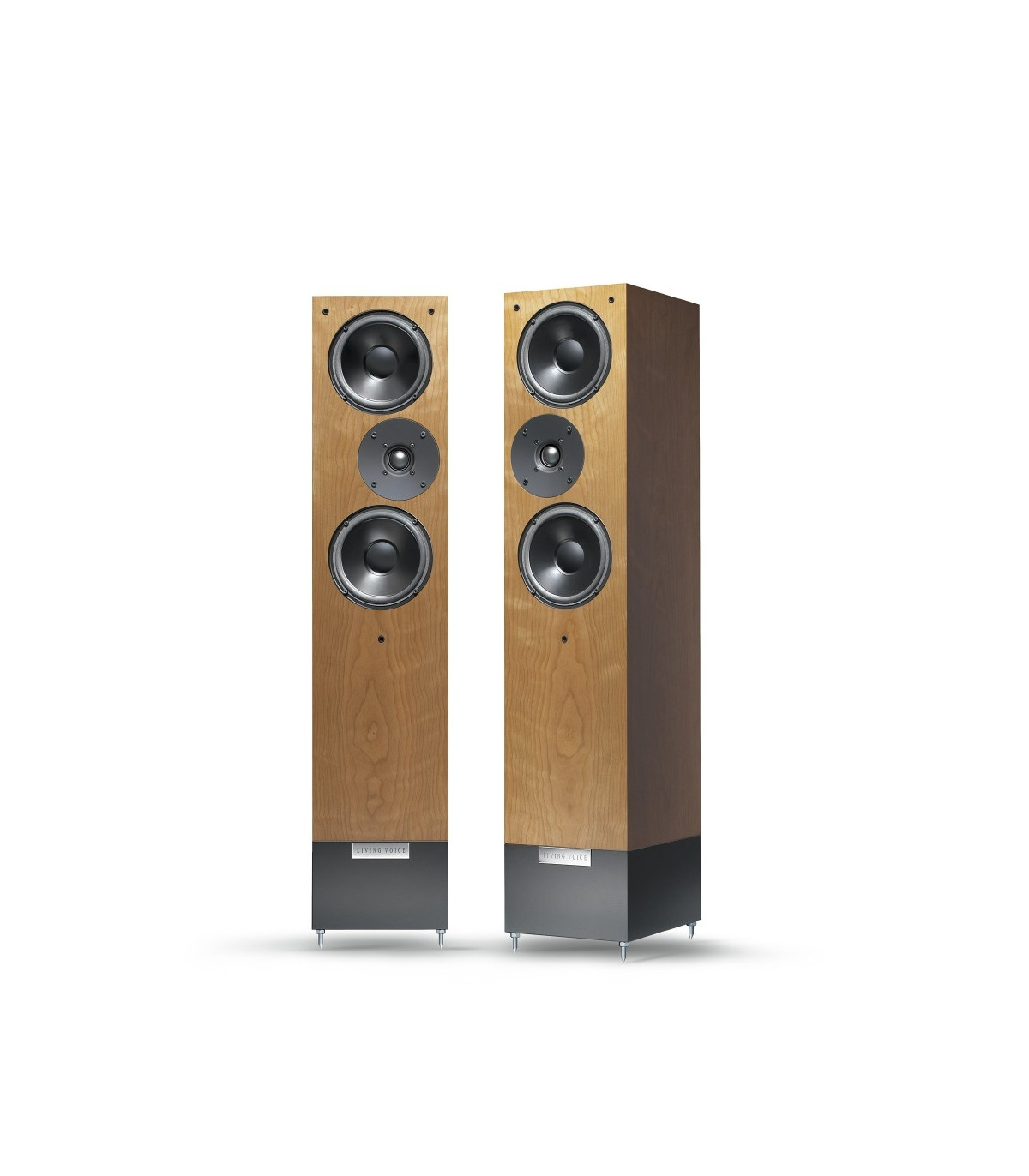

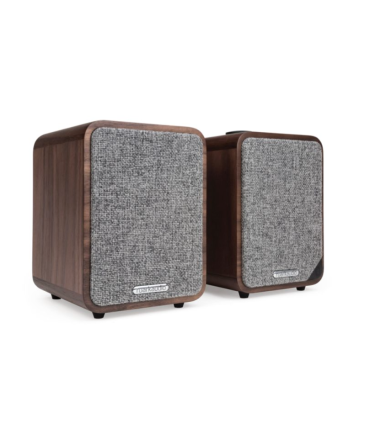

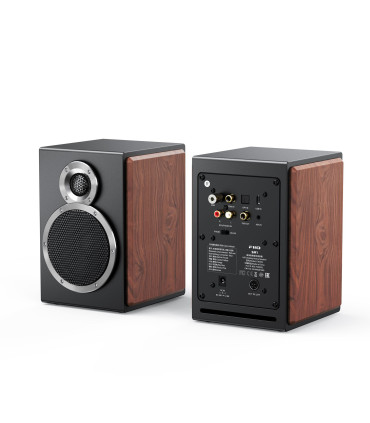
![Bowers & Wilkins B&W 606 S3 Loudspeakers pair [2nd hand]](https://www.playstereo.com/24635-home_default/bowers-wilkins-bw-606-s3-loudspeakers-pair-2nd-hand-.jpg)
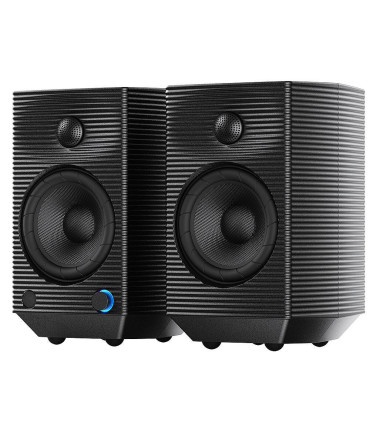

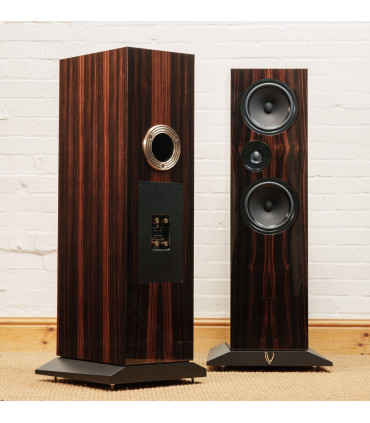

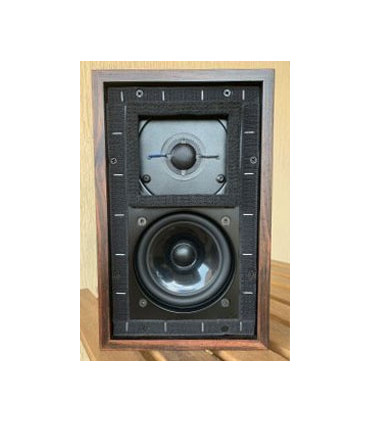
![Q Acoustics 3020c Bookshelf Speaker Pair [b-Stock]](https://www.playstereo.com/23656-home_default/q-acoustics-3020c-bookshelf-speaker-pair.jpg)
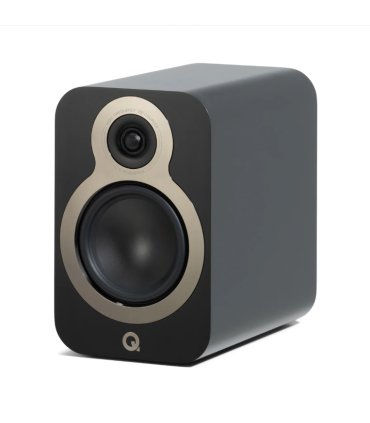
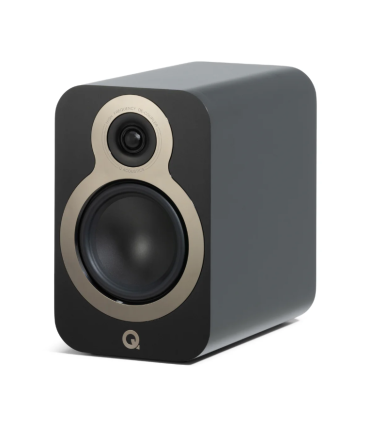
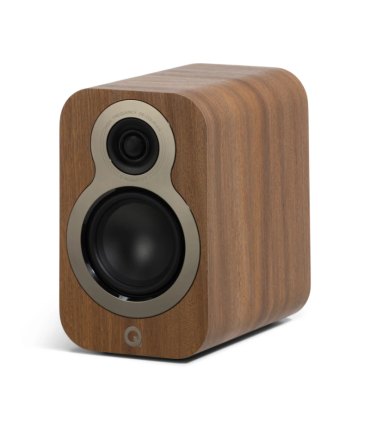
![ELAC VELA BS 404 Loudspeakers pair [2nd hand]](https://www.playstereo.com/23447-home_default/elac-vela-bs-404-loudspeakers-pair-2nd-hand-.jpg)
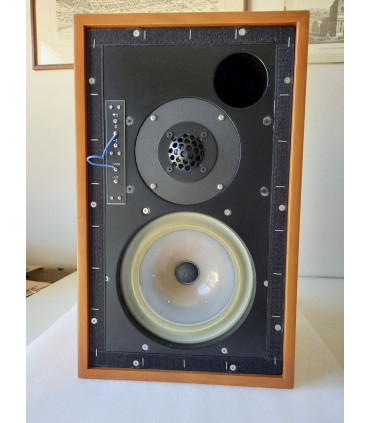
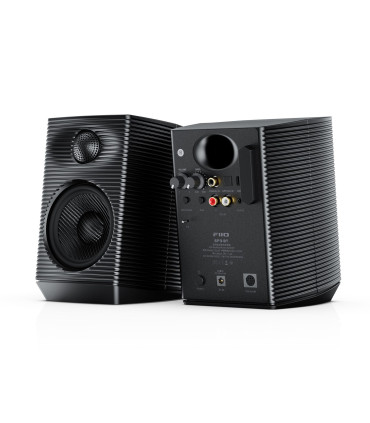
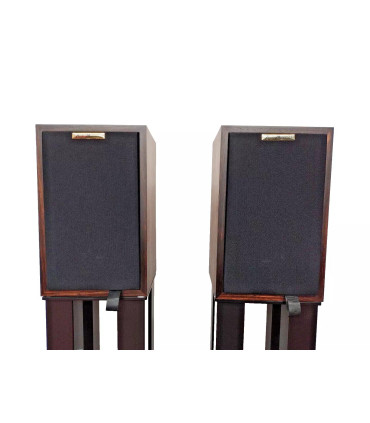


















Leave a review